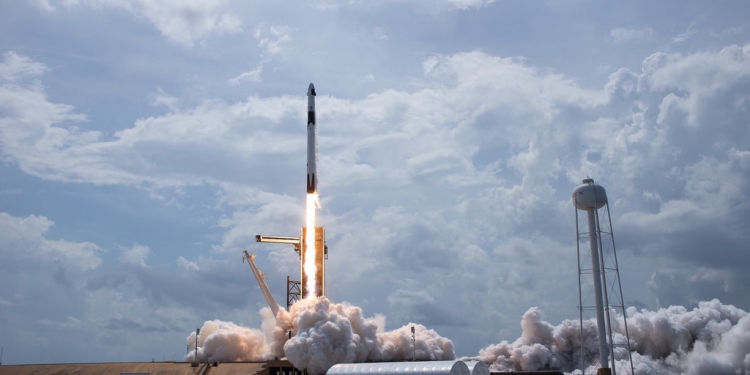On the 31st of May, SpaceX’s Crew Dragon capsule successfully docked with the International Space Station (ISS) carrying two NASA Astronauts, after taking off on 30th of May from Cape Canaveral, Florida. This makes SpaceX, founded by Elon Musk, the first private business to accomplish the feat, as previously it had only been done by nations.
NASA astronauts Bob Behnken and Doug Hurley were the Crew Dragon’s passengers, and will begin an extended stay on board the ISS that could last up to four months. They join three crew mates already living on board the station: NASA astronaut Chris Cassidy and Russian cosmonauts Anatoly Ivanishin and Ivan Vagner.
This Crew Dragon test flight certifies that the private spacecraft meets NASA’s needs and safety standards so they can start routine trips taking astronauts to and from the space station. NASA previously relied on Roscosmos, Russia’s space agency for that task since their space shuttles were retired in 2011.
U.S. President Trump, who observed the launch, said the United States “had regained its place as the world’s leader in space, that US astronauts would soon land on Mars”. He also said that that Washington would soon have “the greatest weapons ever imagined in history”.
This was happening at the same time to protests that have followed the death of George Floyd, a black man in Minnesota who died after a policeman kneed on his neck. You can follow the live updates here. The launch also happened despite of a worldwide pandemic.
Docking at the ISS took place around 10:29PM Malaysian time on the 31st May, and the astronauts opened the hatch of the Crew Dragon at around 12:45AM 1st June, Malaysian time. The crew will perform checks of the Crew Dragon while it’s docked, but it will mostly remain “parked”. When the time comes for astronauts to return home, they will need to depend on the Crew Dragon’s performance again.
SpaceX’s Crew Dragon is equipped with a heat shield to protect astronauts going through Earth’s atmosphere. It also has four parachutes designed to help lower crews gently down into the Atlantic Ocean, where they’ll be recovered by a SpaceX vessel.
If no major problems arise during this first round, the Crew Dragon would need to prepare for routine flights to the space station. The next Crew Dragon mission is to carry four astronauts: three from NASA and one from the Japanese space agency.
[ SOURCE, 2, IMAGE SOURCE ]








